Lesley Dunlop led a walk to look at the geology of Silchester Common on Saturday 4 February, starting from the car park on Impstone Road. It was a dull, grey morning, but not particularly cold. The walk started out northwards along the western boundary of the Common. Lesley explained that the underlying geology at this point was Silchester Gravel, laid down about 480,000 years ago during the Anglian Stage of glaciation, overlying the London Clays and Sands, which were laid down in estuarine conditions and date back about 50 million years. The ice extent in Britain was at its maximum during the Anglian stage and the Silchester Gravels were deposited by outflows from the melting ice. At their thickest, the Silchester Gravels are up to 8 metres thick, but on the Common they are nowhere more than about 4 metres thick. There is a long history of gravel extraction on the Common, as can be seen from early editions of the Ordnance Survey maps of the site. The gravel workings are marked by a network of banks and pits. The walkers then turned eastwards along a track across the Common. The route led past a recently-cleared area where Gorse had been removed and birch trees had been felled, with their cut trunks left neatly stacked. Both Gorse, which was in flower, and Dwarf Gorse, which flowers later in the year, were seen during the walk. To the left of the track was a small pool of water, which Lesley suggested was probably the site of a small gravel extraction pit. Further on, the track led across a stretch of boardwalk. There were various springs higher up the gentle slope to the left, with boggy grassland below. To the right of the boardwalk, the streams flowed into a shallow valley mire, before carving out a deeper valley through the underlying London Sands. Next stop was a section of the Common which had been scraped bare a year or more ago. The exposed stones were examined closely. They showed a range of sizes, with some rounded and some quite sharp and angular. For river-transported material, generally the larger stones are dropped first and the stones become smoother and more rounded with time. This indicated that the gravels on the Common had probably not been transported a great distance. Growing here were a number of specimens of a mystery plant, which had 3-fingered leaves, like a tiny member of the Pea family Fabaceae. Other plants seen here included Sheep’s Sorrel, Bell Heather and Common Mouse-ear. Further mysteries were small circular piles of earth which had been excavated in the sandy soil. At the centre of each pile was a round, finger-width hole. A photograph sent later to Hampshire and Isle of Wight Wildlife Trust Warden Graham Dennis solved this particular mystery. They are made by Dor Beetles, where they bury dung onto which they will lay their eggs. Any form of dung can be used – cattle, deer, or, most commonly, dog.
The walk continued through a wooded section with banks and low wet areas which the early Ordnance Survey marked as an area with gravel pits. The track emerged from the wood and continued across open heathland. A section of red flint lying on the path looked as if it had once formed round a fossil sea urchin. A stack of birch trunks, which must have been felled several years ago, provided the substrate for an interesting collection of fungi. These included Birch Mazegill, Split-gill and Turkey-tail. A small purple specimen on a cut stump was thought to be Silverleaf Fungus. The path continued along a stretch of boardwalk which overlooked a small stream with a gravel bed and crystal-clear water. The walk continued southwards across the eastern side of the Common, before circling back westwards. A small flock of Long-tailed Tits foraged through an isolated stand of oak and birch trees. The track led down into a steep wooded valley which had been carved out of the London Sands, crossed the stream at the bottom and climbed the far side. A willow beside the path supported a small cluster of deep red Blushing Bracket fungi. The track led back up to a more open part of the Common, dominated here by Gorse. Below the steep bank on the left of track was an area of mire, with Trailing St John’s-wort, sphagnum moss and rosettes of Marsh Thistle. The bank itself was known from previous botanical visits to the Common as the site of Lily-of-the-valley, which was described from here in 1948 in Volume 1 of The Reading Naturalist. The plants rarely flower, but they have persisted at the site (although February is too early in the year to see their leaves). The track then led into a more open area, dominated by heather. Some of the small herd of Dexter cattle which live all year round on the Common were seen here. And finally, the identity of the mystery plant was revealed. A specimen was found with the characteristic three-fingered leaves, but below was a section of spiny stem, so the mystery plant was the juvenile stage of Gorse. The adult stage does not have leaves, only spines.
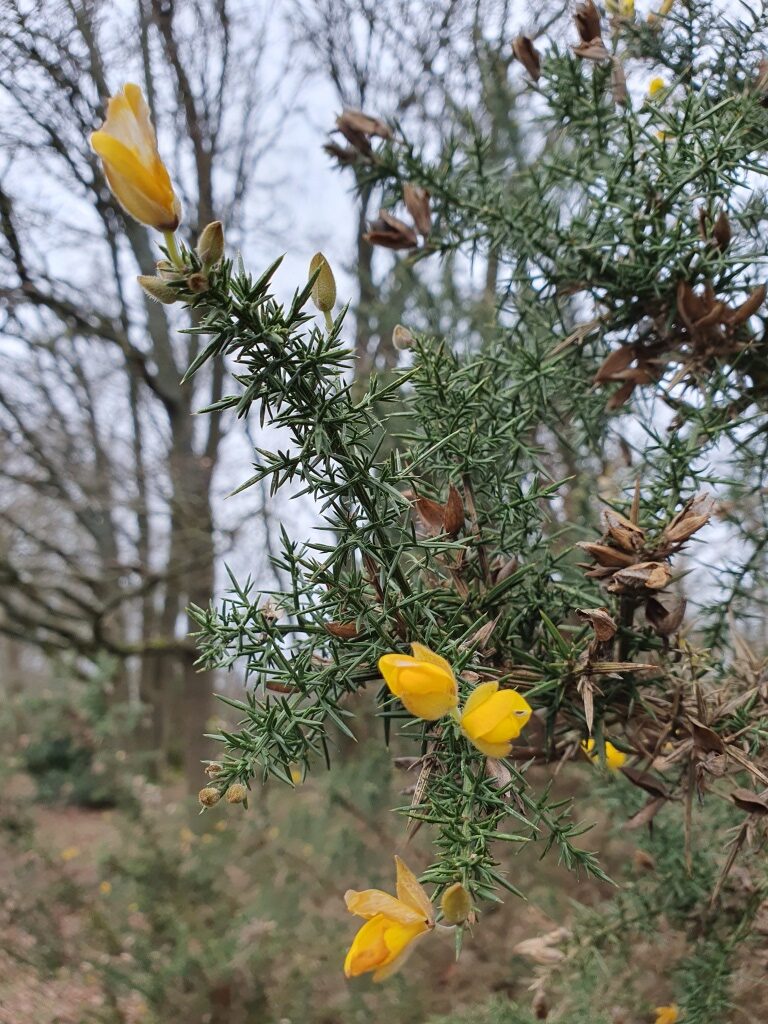
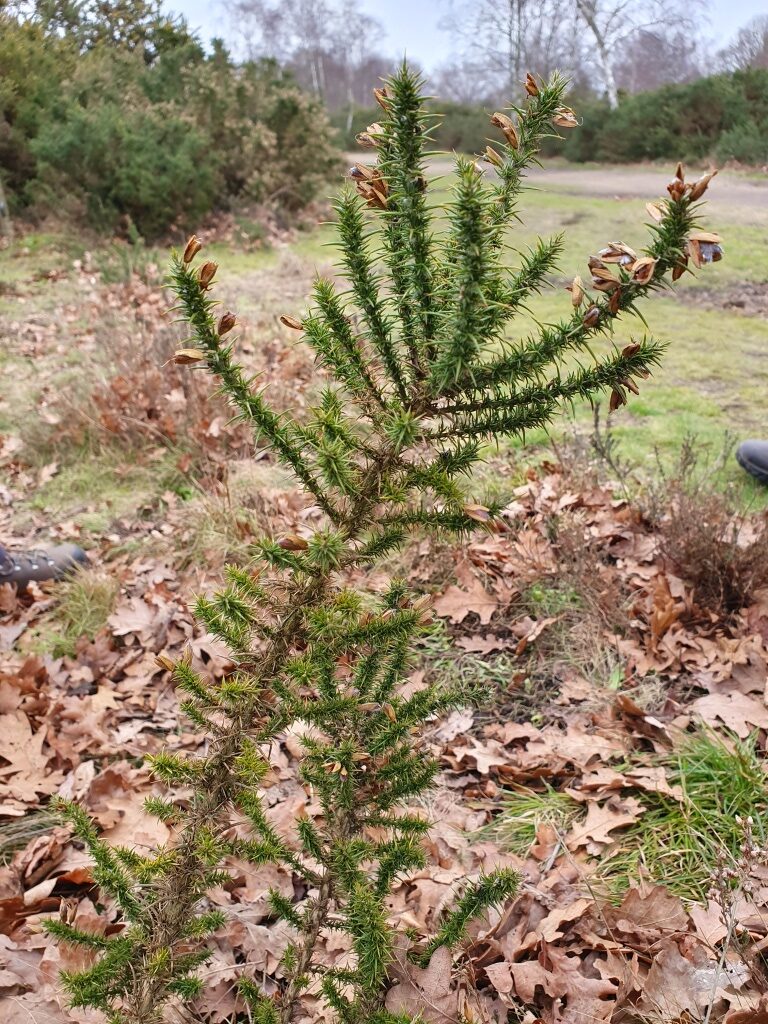
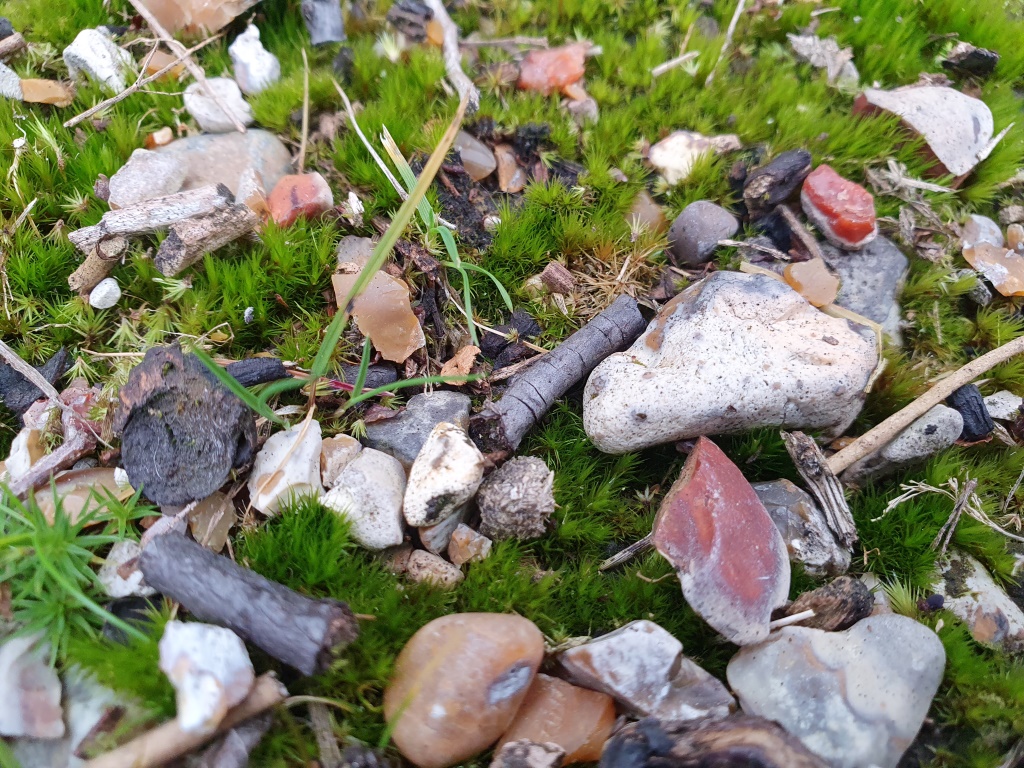
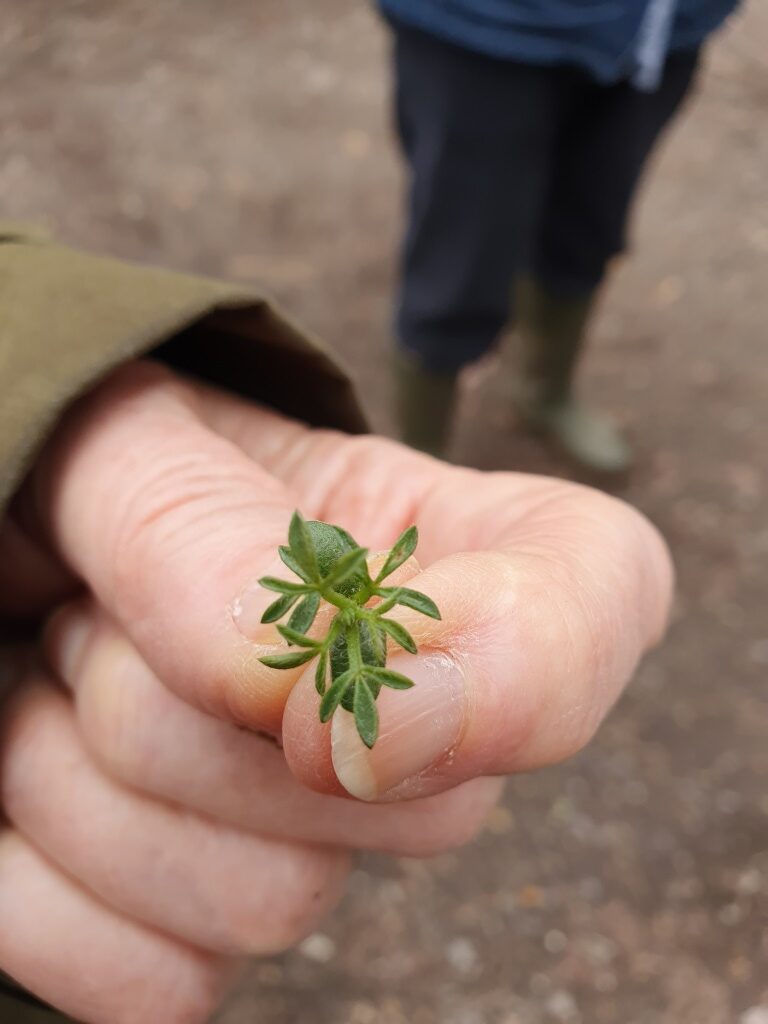
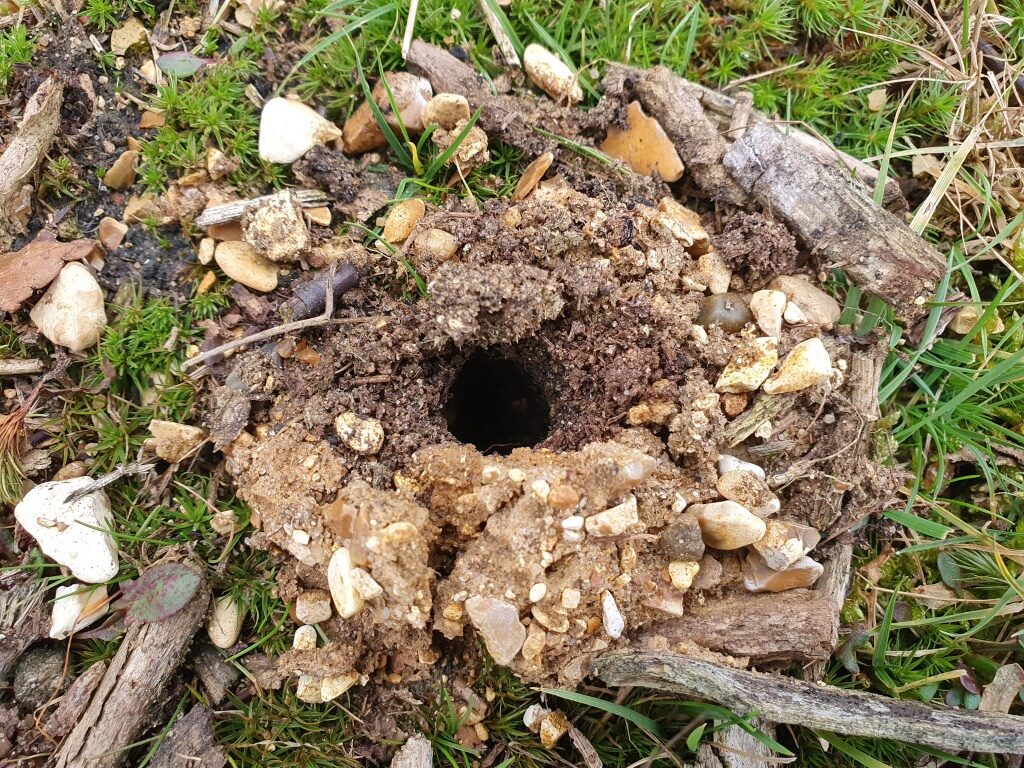
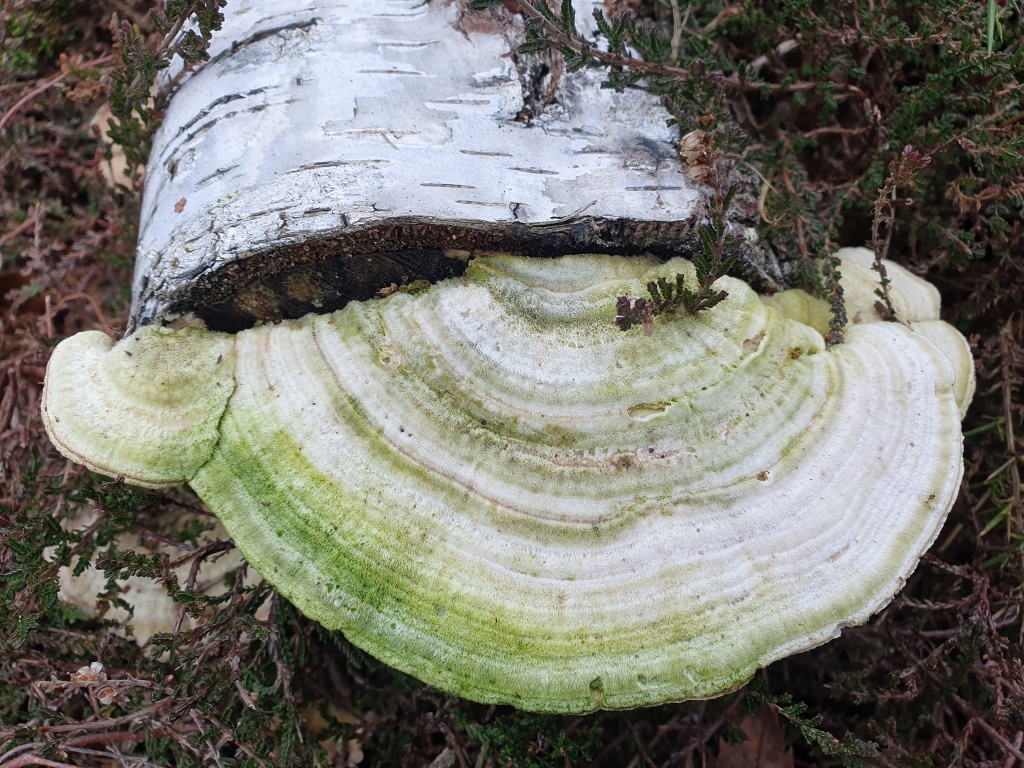
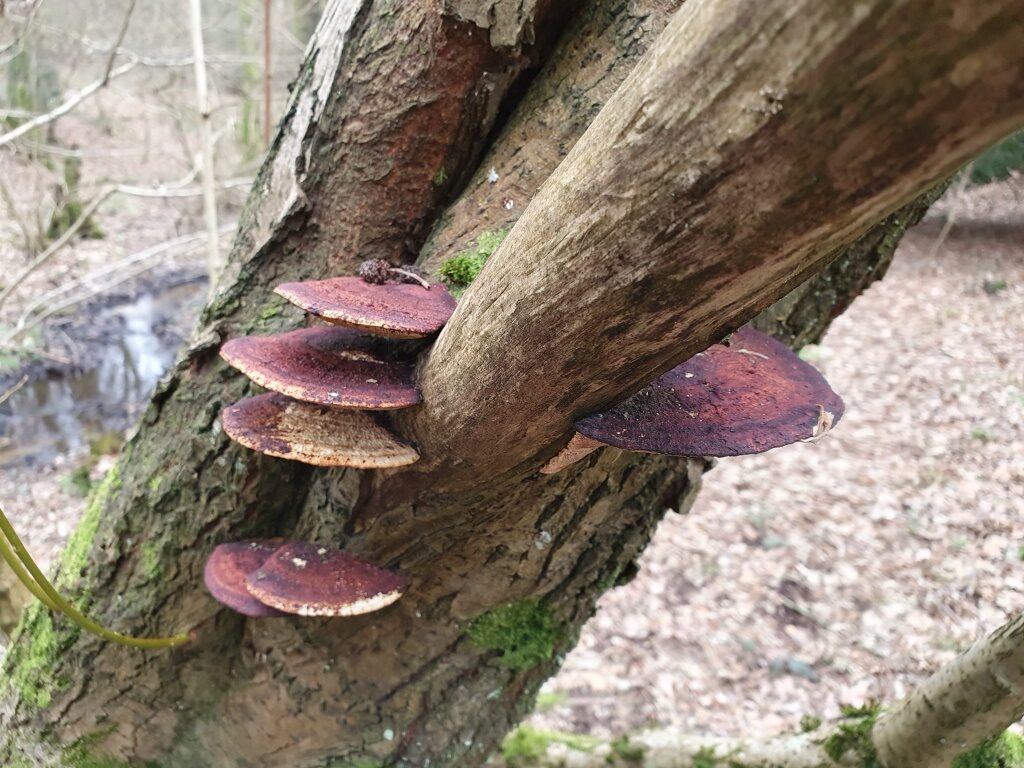
Pictures by Claire Ward
